Among my army of incredible friends and community, we have a few aesthetic tropes that are common–tattoos chief among them. When I was younger and still shedding muggle ideas of normalcy I remember being sort of shocked when someone would just get a tattoo on a whim. You didn’t plot this for years and meticulously scour for the right artist? You got it off the wall?
Not everyone thinks like a Capricorn with a Virgo rising. I’m an Earth sign. Permanency is a big decision. Some people tattoo on whims and some people tattoo with great plans and down payments and sessions. Most folks blend a bit of both.
That’s not the tattoo point I wanted to make. There’s a pattern in my tattooed friends’ bodies. They get home state nostalgia tattoos. They come in lots of types, an esoteric homage, a sign, but most common is a map outline with optional home city starred.
Here’s what I’m talking about.
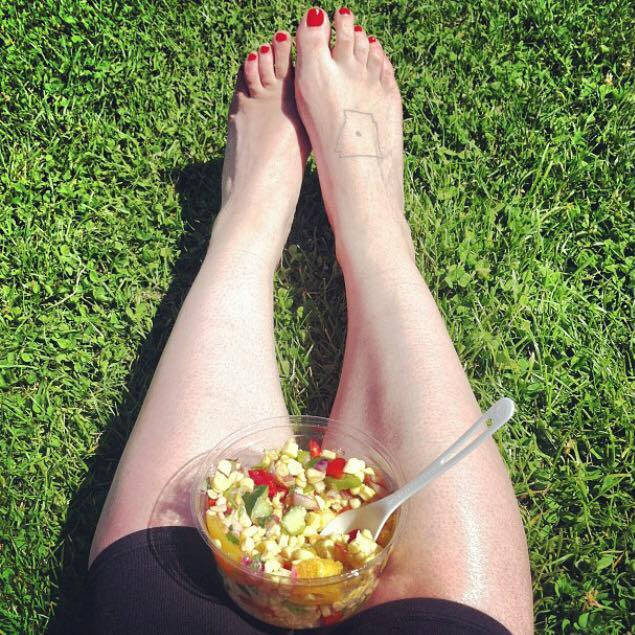 Heart where the hometown is. Photo courtesy Amanda Arkansassy. You can check out the livefeed of the show she is co-curating on June 13th, Y’all Come Back Now: Queer Stories of Southern Migration.
Heart where the hometown is. Photo courtesy Amanda Arkansassy. You can check out the livefeed of the show she is co-curating on June 13th, Y’all Come Back Now: Queer Stories of Southern Migration.
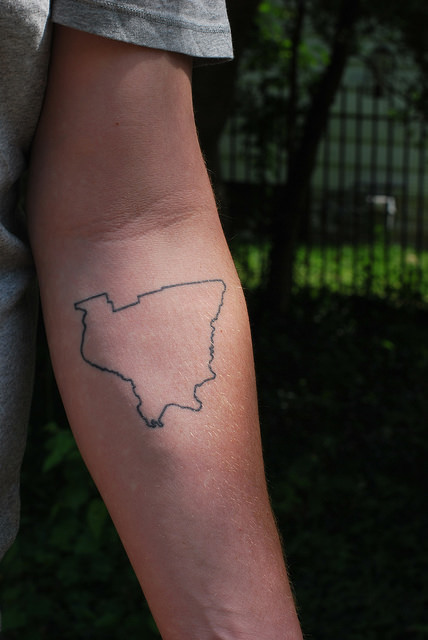 Here’s one of just the region–Southern Illinois. Photo of Matthew Baccus.
Here’s one of just the region–Southern Illinois. Photo of Matthew Baccus.
 Matt and his best friend Meade have matching soil tattoos to indicate Southern Illinois. A home town tattoo is a great mile marker to get when you leave someplace.
Matt and his best friend Meade have matching soil tattoos to indicate Southern Illinois. A home town tattoo is a great mile marker to get when you leave someplace.
This tattoo trope is so common that, when crowd sourcing for an image to use I got enough offers to start a whole USA collage art piece. And Victoria said her tattoo artist told her she would cross over into hipster in a forever way when she got her Minnesota outline.
It’s a Thing.
But it’s not really a Thing I can get behind for myself. I’ve thought about it a bunch, as an ex-patriate Californian of Bay Area origins. I moved to the East Coast in early August 2000. I needed a good dose of time and space from where I grew up and it’s not all healed yet. I created survival tips for returning to my home town. I don’t want a tattoo of my home town.
I do love and appreciate California, especially anywhere but my hometown. The redwoods, San Francisco, Yosemite, Santa Cruz… I even developed a deep appreciation for Southern California, which was a steep climb considering the regional disdain for our So Cal neighbors that Northern Californians instill. (Not all folks feel this way but it is an attitude you’d notice.) I kind of love LA now. I adore Palm Springs, where my beloved Grandmother lives.
When we were driving to Northern CA for my partner to have a work meeting in San Francisco during our post-chemo road trip last Fall, she made the mistake of confusing my hometown of Castro Valley, CA with the famous district of The Castro in San Francisco. The two places are only a 30 minute drive apart, but could not be further from one another in many ways.
I wasn’t so excited to show Dara my hometown, but it was very important for me to dispel any confusing thoughts she had about the two places. I share below some of the highlights.
Castro Valley is known by most folks who live or have lived in the Bay as a place on interstate 580. Coming in from the Central Valley, it’s just past Pleasanton/Dublin, just before Hayward/San Lorenzo. This is what it looks like to enter Castro Valley.

In contrast, The Castro, is known the world over as a hive for gay liberation and historically was a haven for queer folks who needed a place to be accepted. Now it’s a lot more expensive to live there, but is still a destination for LGBT tourists. This is what you see when you drive into The Castro. Very different from Castro Valley.
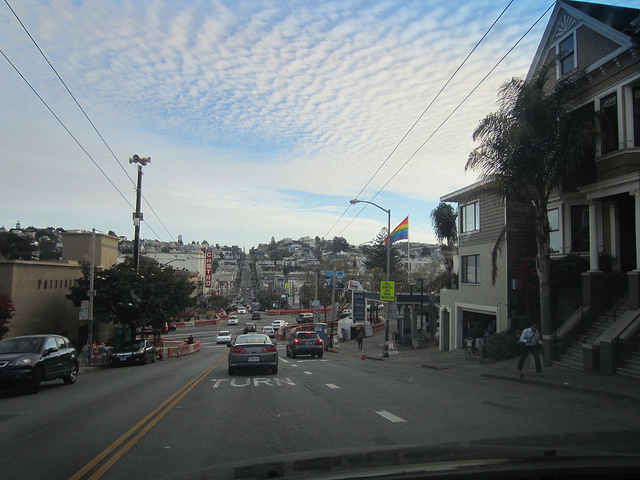 Note the mega giant Pride flag on the right, the legendary Castro theater ahead to the left.
Note the mega giant Pride flag on the right, the legendary Castro theater ahead to the left.
In Castro Valley, I had Dara drive down the main drag, Castro Valley Boulevard. “The Boulevard” as it is known. Here’s one of my favorite spots from when I was a teen. The Starbucks. (Back in 1995/1996 Starbucks was not yet ubiquitous.)
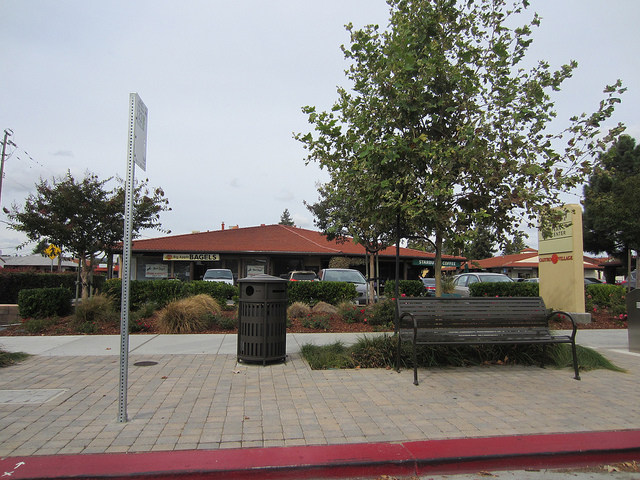
In the Castro, we strolled across the street from yet another cute new indie coffee shop in The Castro.
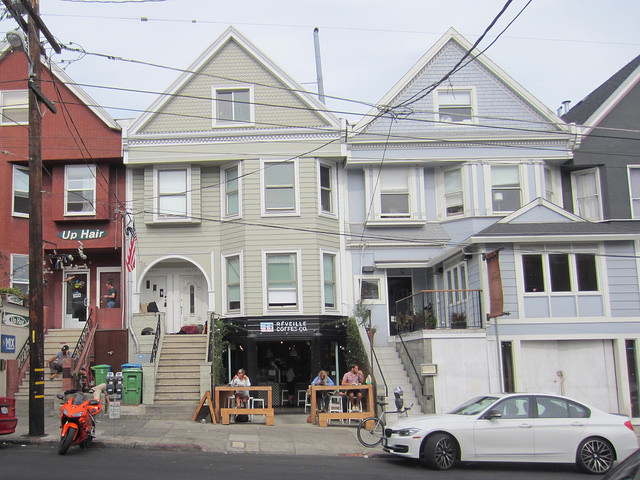
Things in Castro Valley are pretty regular and suburban looking. Because it’s the suburbs. 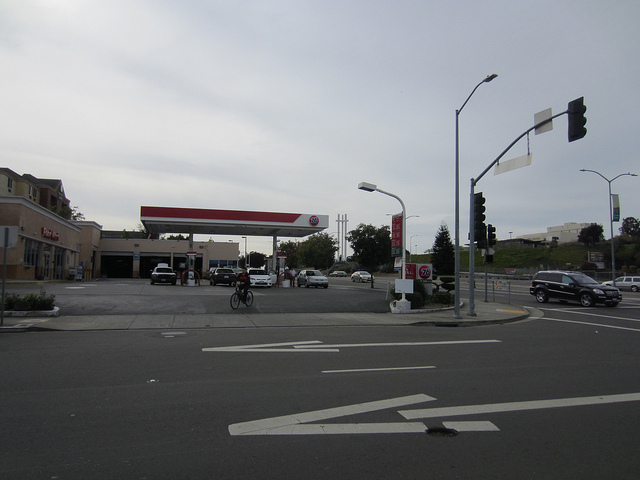
Things in The Castro look like a vibrant neighborhood in a major metropolitan city, because it’s the city. “The City” is what we would call San Francisco in Castro Valley.

When I was a teenager my best friends and I would hang out at this McDonald’s a lot. Hanging out at fast food places and Lyon’s were kind of the thing to do. There’s not even a mall in Castro Valley, we would have to go to Pleasanton or Hayward for that.
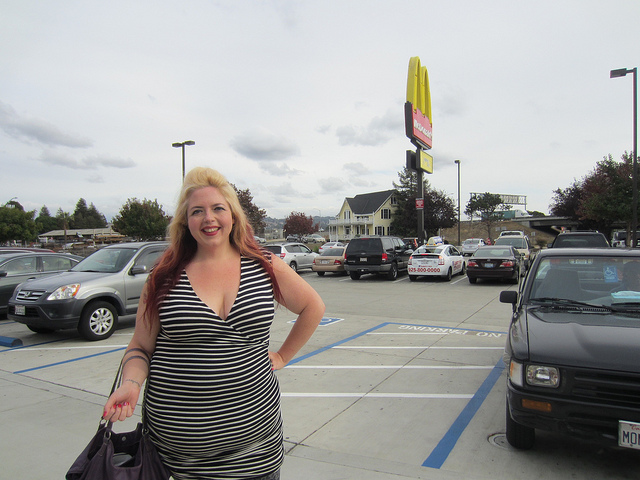
When I was a teenager I didn’t find any girls to make out with in The Castro, but we could have smooched here. I don’t think we would have even been able to hold hands safely in Castro Valley.
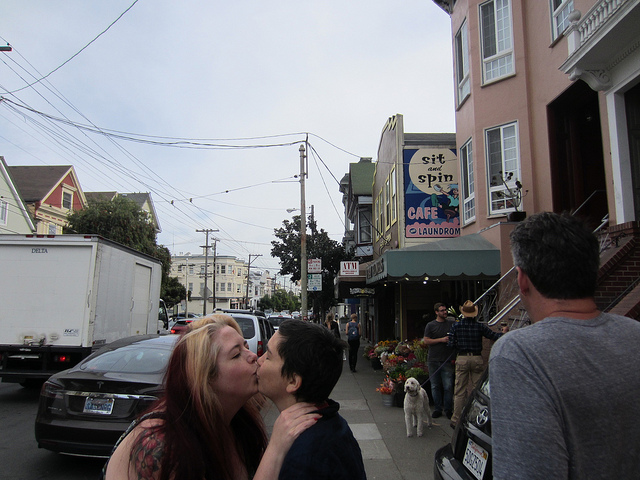
The most significant landmark in Castro Valley is the three crosses leaping up from the hill at Three Crosses church, one of the two (maybe more now) mega Christian churches in town.
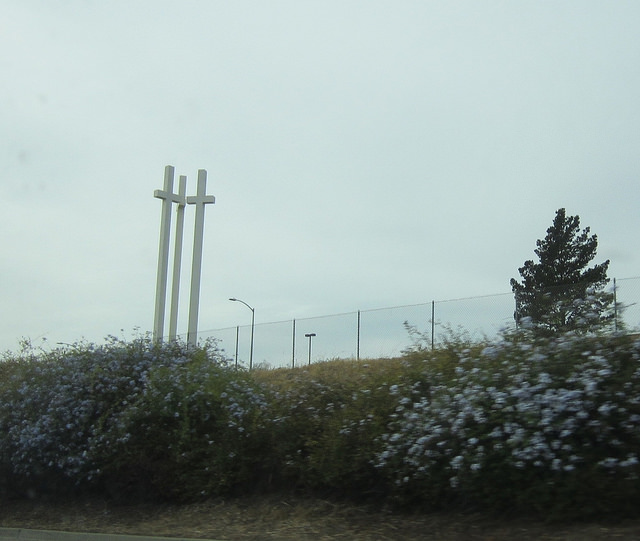
The Castro, as seen from Twin Peaks, has a very different significant landmark.
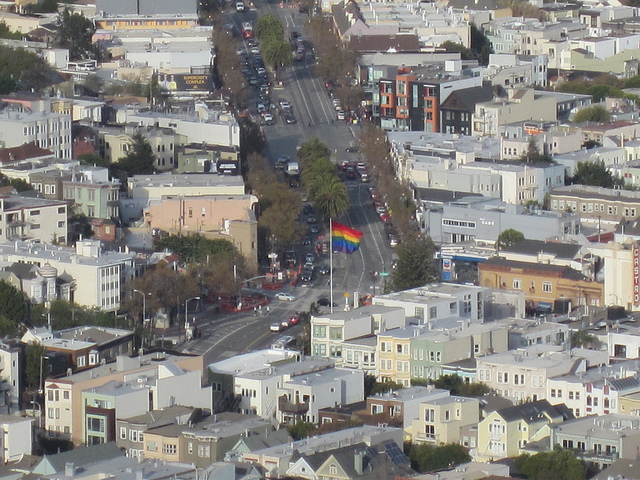
On my visit to The Castro I was sad to note that the place I bought my first Pride rings is closed… But that was almost twenty years ago so it had a good run.
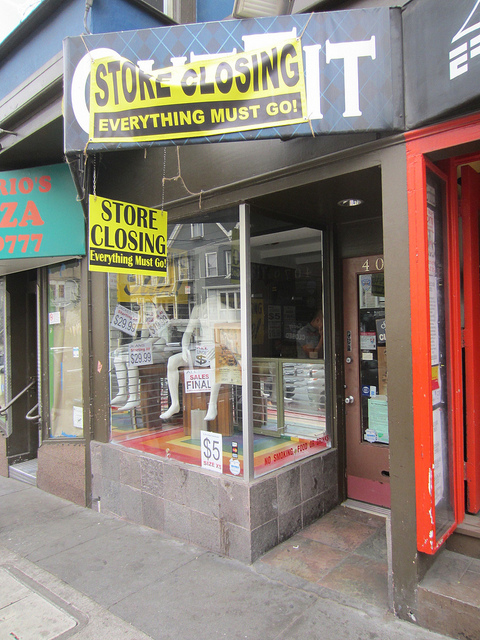
In Castro Valley, the streets are just streets.
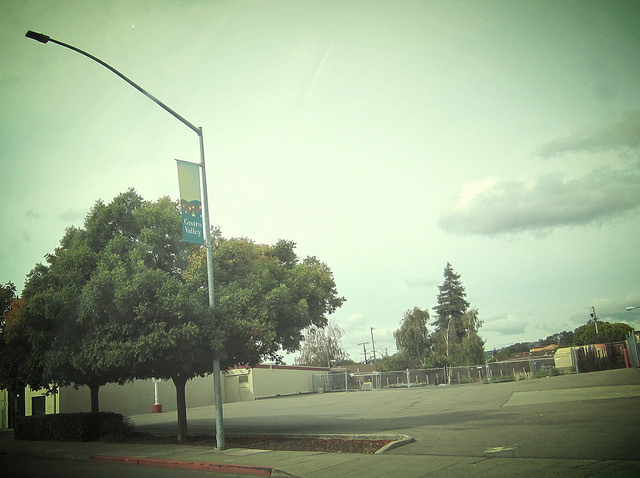
In The Castro, the streets are actually paved with rainbows.
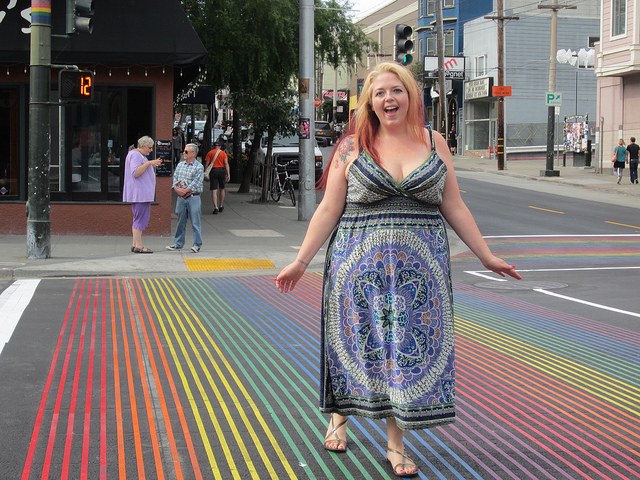
Anyway, now you know why The Castro and Castro Valley are not the same thing. And this is only just a whisper of why I’m not leaping to get a Castro Valley hometown nostalgia tattoo. My mom’s house is cute, but when she talks about selling it to downsize for her and her wife’s retirement… I’m okay to let it go.
I see my friends who have so much pride in and love for the places they come from inked on their bodies. And I’m sure they also feel some complexity, too. Hopefully this is a piece of solidarity for those folks who feel really great to let their hometowns go, and hope to do healing work around it.
